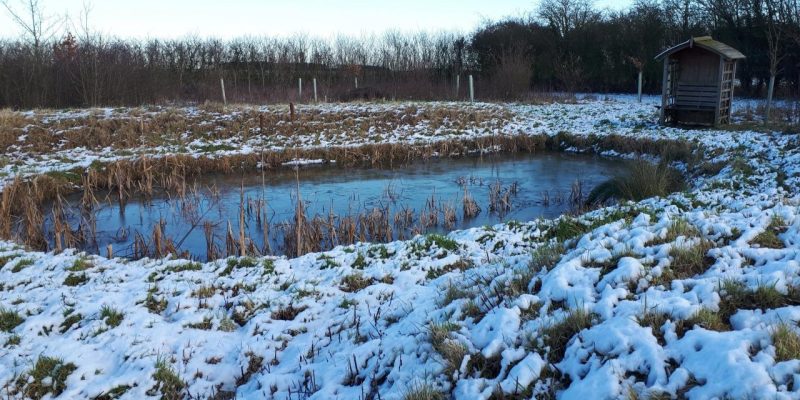
Jubilee Wood in December
December can be a difficult month for some people, with the nights at their longest it can seem a dark and challenging time, but if we look at the natural world we might learn a way of seeing things differently.Wandering around the wood, whether the late afternoon sunshine is sinking below the trees, or the bare branches are being blown around under cold grey skies, I wonder how all the plants, birds and mammals cope at this time of year.
Hibernation and dormancy helps many of them to protect themselves against the elements, and if you look closely at deciduous trees you will see a scar where the leaves have been shed, providing protection from infection and severe weather. Most insects and other invertebrates hibernate during the winter as they can’t produce their own body heat like birds and mammals but something they can do is burrow down deeper into the soil to benefit from an increase in a few degrees of soil temperature. Apparently earthworms can avoid freezing by increasing the amount of sugars in their body fluids, reducing the temperature at which they will freeze – in the same way putting antifreeze in your car washer fluid keeps it liquid!
Seed heads provide food for birds over the winter months but they can also provide shelter for various insects, whilst long grass and dead leaves can provide safe havens for several moth and butterfly life cycle stages, protecting them from winter weather and predators. Most species enter a dormant phase and this can be as an egg, larva, pupa or adult insect, dependent upon species. The majority of butterflies and moths overwinter in the larval stage, with pupae being the next most common choice, followed by eggs and adults. Adult moths can hibernate under the bark of logs or deep in amongst dense ivy, perhaps sharing winter digs in the Jubilee Wood with our old friends the Great Crested Newts! Some like the Brimstone, Small Tortoiseshell, Peacock and Comma overwinter as dormant adults and we certainly need to help them as much as we can. The full results of this year’s Big Butterfly Count are out and can be viewed by following the link below and whilst many populations thrived in the good conditions, sadly the number of the Meadow Brown, which was so abundant in the Jubilee Wood this summer, is down by 56% since 2017 so there’s still a lot of conservation work to do.
Perhaps this ability of nature to adapt to conditions is something we could benefit from. Slowing down during these dark days may be useful for us too, giving ourselves time to recharge our batteries in whatever ways suit us. Reading those books we never got round to, planning wildlife friendly changes to the garden next year and making New Year resolutions to find time to visit the Jubilee Wood more often if we can, whether it be a for quiet walk or a community event such as helping to clear undergrowth and a general tidy up. Whatever you decide, a Happy New Year to you and hopefully the Jubilee Wood will be part of a very healthy one for you too!
The Wood Wanderer
Interesting websites:
Leave a Reply